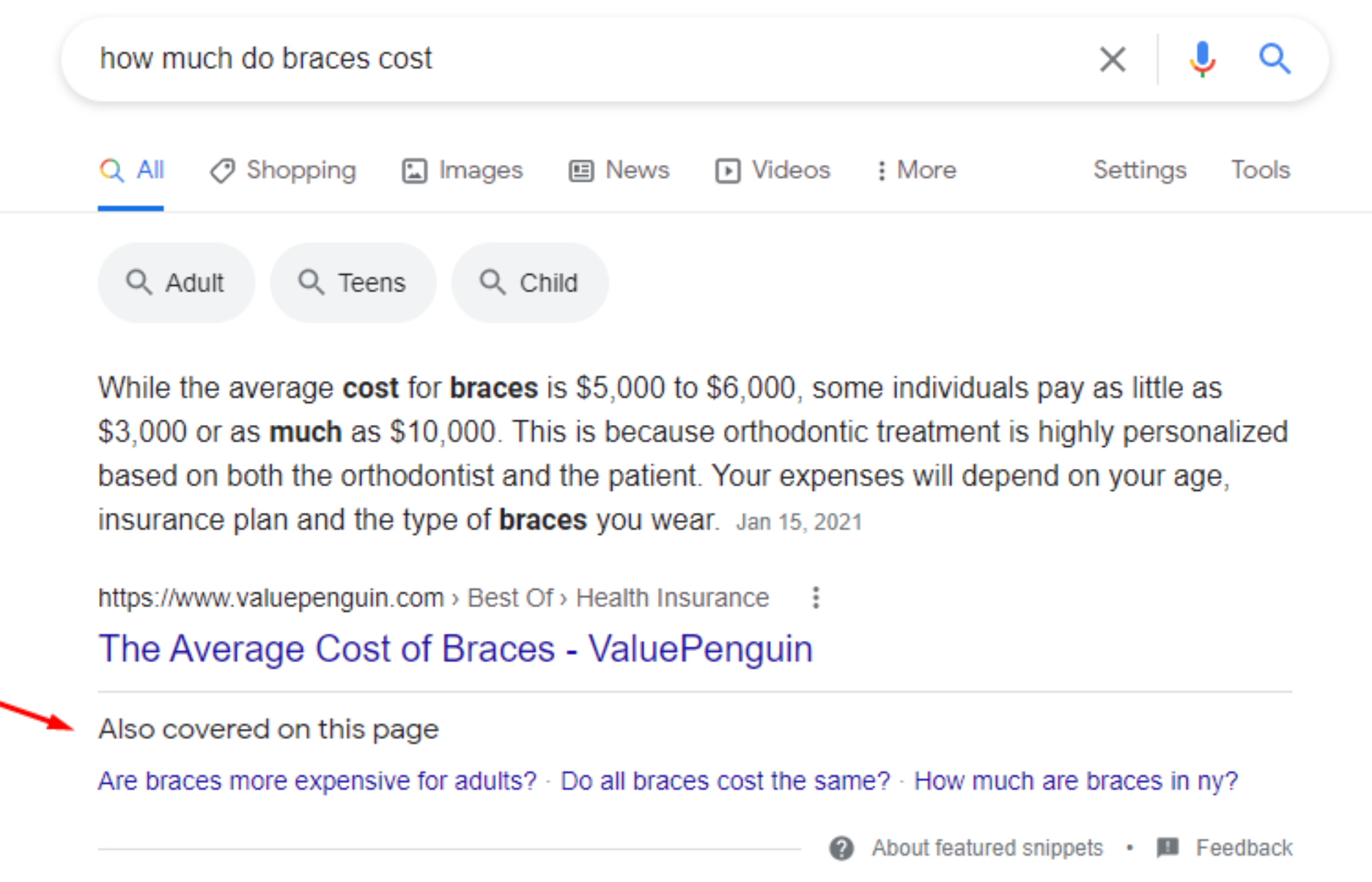Article's Content
Welcome to volume 34!
Happy Pride Month!
On May 27th Google hosted its marketing live stream, and if you missed it, don’t worry; we have the spark notes search version for you.
Before we get into that, here’s a peek at what’s to come:
- Search related recap of Google’s marketing live stream
- Psuedo passage ranking coming to a SERP near you
- Supporting content creation through advanced search

Would you thrive being responsible for strategizing, executing, and managing paid campaigns?
Are you looking to create and leverage real-time data dashboards to display campaign performance to clients and internal team members visually?
If yes – you may be just who we are looking for to join our team as a digital media buyer.
Foundation has a few job openings at the moment; if you’re looking to be the next Foundationite, have a look at our job openings.
Google’s Marketing Livestream TL;DR
Full transparency, I didn’t attend the marketing live stream, but the folks at Search Engine Journal did, and Amy Bishop has compiled a comprehensive TL;DR of the event.
In this piece, I will be focusing on the SERP-related announcements from the webinar and sharing how to leverage the new features to stand out amongst the competition.
Images in Search Ads
Coming out of beta testing, Google is allowing advertisers to include images within their search ads. Including image content in line with your search ad will help you to stand out against your competition. Additionally, it will help you stand out against eCommerce ads; in the past, it hasn’t been fair that they could display images while other advertising services could not.
I’ve said this before, and I’ll say it again, your audience likes visuals! In B2B marketing, everyone ends up saying the same thing. Include an explanatory image in your search ad and watch the clicks come in.
Extending Modeling Capabilities
With the removal of cookies, Google needed to pivot to satisfy our need to understand our customer’s journey.

And pivot they did by announcing the rollout of modeling capabilities to behavioural reporting, which will help marketers understand valuable insights of the customer journey in a cookie-less world.
Google Analytics’ Advertiser Report
Multi-touchpoint marketing is an emerging trend of 2021, and Google is on the ball with the rollout of a new advertiser experience in Google Analytics.
This new experience will allow us access to deeper insights into cross-channel campaign performance, advertising metrics, and recommendations.
YouTube and Display Attribution Model Incorporation
On the topic of multi-channel marketing, Google reiterated its plan to include YouTube and Display in attribution models. This includes data-driven attribution, which will help you to understand the full impact of the multi-channel campaigns on your marketing ecosystem.
It’s important to note that Google stated they are looking for ways to help connect user journeys across the site and app in a privacy-safe manner. And these are the first attempts in doing so.
Key Takeaways
- Search ads are now compatible with images.
- Google found a way to pivot their user tracking in the coming cookie-less world.
- Google is focusing on optimizing its analytics for multi-channel marketing campaigns.
Passive Passage Ranking
We know that Google is rolling out passage ranking, which benefits well-structured pages by identifying content in H2s and H3s that may rank for alternate queries not directly related to the post/page title.
And now, Twitter user and SEO consultant at G-Squared, Gleen Gabe, noticed a new feature highlighting content headers directly in the SERP.

Google is pulling out content that is also covered on the page. These call-outs aren’t exact header matches, but they are hyperlinked to take the user to the page section that relates to the question.

There has been no news from Google itself on this topic, and from what I can search, it isn’t a feature that has rolled out in Canada.
Google aims to create a directory of support, for multiple queries, all from one featured snippet. So, when planning your content, instead of aiming to target one search query at a time, look to the “people also ask” category and see what else you can answer on that one page.
Not only will optimizing page headers and supplying additional information on your page improve SEO performance for passage ranking, but it will also benefit your featured snippet clicks and potentially help secure that sacred spot.
The more you can offer to Google, the more it will offer you in return.
Key Takeaways
- Headers need to be optimized for additional search queries.
- For quality content, look to the people also ask section to uncover additional topics.
- “Also covered on this page” may be another Google glitch, but passage ranking requires optimized headers for best results.
Using Advanced Google Searches In Competitor Content Research
Keyword research is all fine and dandy until you’re left with a 10,000-row spreadsheet and no parameters to help you sort through it.
Identifying keywords your competitors are ranking for is a fantastic first step. It’s much less risky than taking a wild guess. but what’s really powering top-ranked positions?
The content quality determines the SERP rank for a specific keyword (among other mysterious ranking factors).
So naturally, it is best to know what kind of content is being created and reverse-engineer the structure of top-ranking pages.
Identifying Competitor Pages Ranking for a Targeted Keyword
Starting off broad, you can simply Google search the keyword you are looking for and begin to peel back the skeleton of the top ten pages. To avoid having your site content returned during the search, simply add the [-site: URL] to your search.

That returns a reasonably broad search result.
Alternatively, you can use the following search operation when you are looking to compete against a hand full of specific competitors:

*if you are just looking at one competitor, remove the OR and close the parentheses.
Identifying Gaps in Keyword Research
Surely if you have reached 10,000 rows of keywords, you haven’t left any gaps. Just in case some terms have slipped by, you can search using -”phrase” to identify additional terms.

This returns content that broadly matches the target long-tail keyword “content marketing” but avoids returning exact match results. Doing this, you will uncover additional topic ideas, additional terms, and pages targeting content you are planning to create.
Identifying the Best X List
Pages in the form of “The Best 10 Places to Eat in Halifax” are beloved by your audience. Everyone loves a top ten list, and that includes your competition.

Using an intitle advanced search command will return all pages already ranking for a broad match to your keyword with a top x list. You can use these findings to decide the best amount to include in your list and review the general competitiveness of the landscape.
Google is full of tips and tricks to make the most out of search; it’s our job to uncover what those tricks are and how to leverage them for our advantage. Moz does a great job in breaking down quite a few advanced search operators. Some are useful, while others are fun to know.
Key Takeaways
- An advanced organic search reveals fruitful competitor research.
- Keyword research is only the first step; you still need to understand the structure of top pages.
- SERPs are getting more competitive every day. Stay ahead of the curve by advanced searching content you are looking to create.
OTHER NEWS OF THE WEEK:
🤖 On a mission to automate the interactions within online communities, Orbiit secured $2.7M in its last round of funding.
🎮 Avoiding errors in human-machine interaction isn’t an easy feat; CorrActions is working to make it a non-problem for us end-users and has raised $2.7M in seed funding to do so.
🌉 Breinify is a startup working to bridge data science and personalization in a marketing-accessible way, and they achieved a total of $11M coming out of its last funding round.
BRAIN FOOD OF THE WEEK:
The UK police were hot on the trail of a cannabis grow-op located on the outskirts of Birmingham.
When they started to close in on the cannabis farm, they weren’t greeted by the smell of weed. They were greeted by the sounds of keys clicking on a keyboard.
It turns out, a cannabis grow-op has the same physical infrastructure and worker rotation as a Bitcoin mine. The police found 100 computers illegally tapped into the mains supply (utility grid) of electricity inside the mine. The computers were seized on site, but no arrests have been made yet.
Bitcoin mining isn’t inherently illegal, but a crime was underway as stealing electricity is illegal in the UK. However, crypto mining is under threat of criminal prosecution due to the negative environmental factors and drain on resources it causes. Iran is one of the first countries to ban crypto mining, and China’s inner Mongolia region is close to following suit.
TWITTER THREAD OF THE WEEK:
10 Years in the Making by Eddie Shleyner (@VeryGoodCopy)
WHAT WE’RE WIRED INTO THIS WEEK 🎧:
A Letter To My Younger Self by Quinn XCII (Best Track: Stacy)
Originally sent out, by me Cali B, on Thursday, June 3, 2021.
Stay up to date with all of our latest findings by subscribing to our newsletter today. Signing up also gives you early access to Ross’ Tuesday essay full of exclusive industry insights.
Quick, do it now before the next drop!







